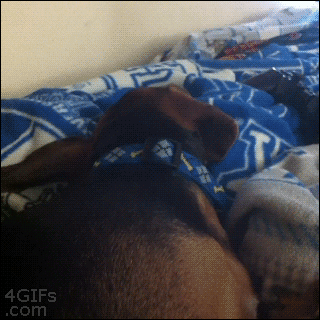Monday, July 31, 2017
Atlas, Daphnis, and Pan - UNIVERSE
Atlas, Daphnis, and Pan are small, inner, ring moons of Saturn, shown at the same scale in this montage of images from the still Saturn-orbiting Cassini spacecraft. In fact, Daphnis was discovered in Cassini images from 2005. Atlas and Pan were first sighted in images from the Voyager 1 and 2 spacecraft. Flying saucer-shaped Atlas orbits near the outer edge of Saturn's bright A Ring while Daphnis orbits inside the A Ring's narrow Keeler Gap and Pan within the A Ring's larger Encke Gap. The curious equatorial ridges of the small ring moons could be built up by the accumulation of ring material over time. Even diminutive Daphnis makes waves in the ring material as it glides along the edge of the Keeler Gap.
Image and info via APOD https://apod.nasa.gov/apod/astropix.html
Image Credit: Cassini Imaging Team, SSI, JPL, ESA, NASA
Blue whale heart & (What is Plastination?) - BIODIVERSITY
Blue whale heartThis is a 440-pound blue whale heart. Scientists conducted a first of its kind preservation effort - plastination - to salvage it from a decomposing body.
What is Plastination?
Plastination is a preservation method to generate non-toxic anatomical specimens, which can be used for long-term educational purposes.
Article:https://www.wired.com/story/how-scientists-preserved-a-440-pound-blue-whale-heart
Photo: Courtesy of the Royal Ontario Museum
Saturday, July 29, 2017
Catching speeding stars - UNIVERSE
This animation reveals the evolution of stars in our Galaxy over the past million of years.
It starts from the positions of stars in the sky 1 035 000 years ago, which were calculated using data from the Tycho-Gaia Astrometric Solution, or TGAS, one of the products of the first Gaia data release. The video follows the evolution of stellar positions until the present day, ending with a view of the sky as measured by Gaia between 2014 and 2015.
Highlighted in yellow are the trajectories of six special stars: these are hypervelocity stars, moving through the Galaxy at several hundred of km/s. While it might not be apparent from the video, which shows the motions of stars as projected on the sky, they are moving through space much faster than the galactic average.
Scientists spotted these speeding stars from the TGAS data set of two million stars with the help of an artificial neural network – software that mimics a human brain – and they are looking forward to finding many more in future Gaia data releases.
These stars owe their high speeds to past interactions with the supermassive black hole that sits at the centre of the Milky Way and, with a mass of four million Suns, governs the orbits of stars in its vicinity. Having travelled great distances through the Galaxy, they provide crucial information about the gravitational field of the Milky Way from the centre to its outskirts.
One of the six stars (labelled 1 at the end of the video) seems to be speeding so fast, at over 500 km/s, that it is no longer bound by the gravity of the Galaxy and will eventually leave. The other five stars are somewhat slower (over 400 km/s for the stars labelled 2, 3, 4 and 6, and 360 km/s for the star labelled 5) and are still bound to the Galaxy.
These slightly slower stars are perhaps even more fascinating, as scientists are eager to learn what slowed them down – the invisible dark matter that is thought to pervade the Milky Way might also have played a role.
The stars are plotted in Galactic coordinates and using a rectangular projection: in this, the plane of the Milky Way stands out as the horizontal band with greater density of stars. The stripes visible in the final frames reflect the way Gaia scans the sky and the preliminary nature of the first data release; these artefacts are gradually washed out in the video as stars move across the sky.
Source and further reading:http://www.esa.int/Our_Activities/Space_Science/Gaia/Artificial_brain_helps_Gaia_catch_speeding_stars
Credit:
ESA/Gaia/DPAC
Sussex scientists pinpoint sensory links between autism and synaesthesia - NEUROSCIENCE
Concrete links between the symptoms of autism and synaesthesia have been discovered and clarified for the first time, according to new research by psychologists at the University of Sussex.
The study, conducted by world-leading experts in both conditions at Sussex and the University of Cambridge and published in the journal Scientific Reports, found that both groups experience remarkably similar heightened sensory sensitivity, despite clear differences in communicative ability and social skills.
Two previous studies had found an increased prevalence of synaesthesia in autistic subjects, suggesting that although they are not always found in conjunction, the two conditions occur together more often than would be expected by chance alone. However, this is the first study that has attempted to draw a definitive symptomatic link between the two.
Synaesthesia and autism seem on the surface to be rather different things, with synaesthesia defined as a 'joining of the senses' in which music may trigger colours or words may trigger tastes, and autism defined by impaired social understanding and communication.
The new research shows that both groups report heightened sensory sensitivity, such as an aversion to certain sounds and lights, as well as reporting differences in their tendency to attend to detail.
However, the synaesthetes tended not to report difficulties on the traditional communicative symptoms that usually define autism. While the research shows that there are certainly links between the two conditions, these appear to be sensory rather than social.
Source and further reading:http://m.sussex.ac.uk/newsandevents/index?id=39479
Journal article:https://www.nature.com/articles/srep41155
Source: Corina Marinescu
Subscribe to:
Posts (Atom)

















































